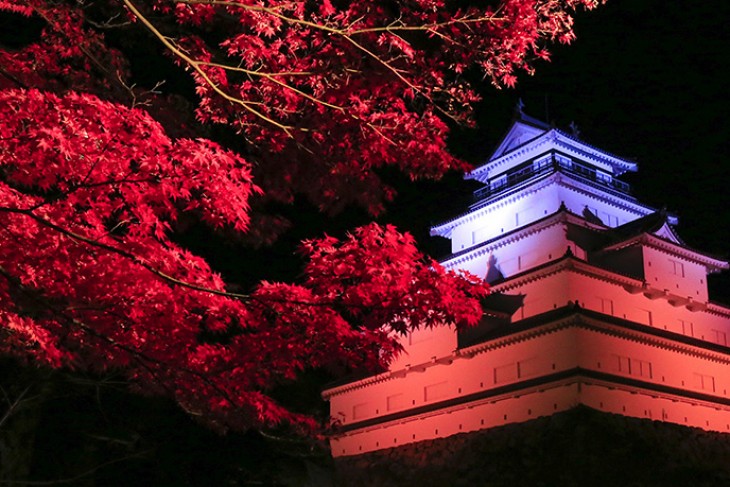
Tsurugajo Castle is a popular spot to visit among tourists coming to Fukushima. Whether you’re discovering the samurai history of Aizu-Wakamatsu City in the castle museum, relaxing while taking a sip of freshly-prepared matcha at Rinkaku Tea Rooms, or snapping some photos from the observatory on the top floor of the castle, Tsurugajo is an epic destination for visitors to Japan, and an absolute treasure trove for history buffs.
WHAT MAKES AIZU-WAKAMATSU CITY SPECIAL?
Aizu-Wakamatsu City, surrounded on all sides by mountains, has been a bustling, scenic castle town for centuries. The region’s climate is thought to have enabled regional agricultural prosperity, which led to rich cultural developments. From the Sengoku Period (1467 – 1568) right up to the end of the Edo Period (1868), Aizu – with Aizu-Wakamatsu City at its heart – was ruled by successions of powerful warlords who revered Aizu for its strategic location as the gateway to the Tohoku Region. As the Sengoku Period came to a close, Aizu was blessed with a 225 year period of relative peace and stability, allowing for the flourishing of the arts and culture (like tea ceremony and martial arts) to take place. Aizu-Wakamatsu City became a hub of Japanese culture – and this can be still be experienced today.
WHEN WAS TSURUGAJO CASTLE BUILT?
Tsurugajo Castle was originally built as a palace in 1384 and underwent key structural changes in the centuries that followed as ruler succeeded ruler. Probably the most important structural change was the construction of a seven-story castle tower at the request of Sengoku Era Feudal Lord Gamo Ujisato in the 2nd half of the 16th century, which gave Tsurugajo its recognizable form of a Japanese castle. The castle tower was reduced to a five-story tower sometime after the conclusion of Ujisato’s feudal rule. For 225 years, starting from 1643, Aizu was held and ruled by the Matsudaira Clan from 1643. The castle was destroyed by the Meiji Government in 1874 in response to the castle’s role in fighting to keep the old regime in power.
HOW OLD IS THE CASTLE YOU CAN VISIT TODAY?
The castle was reformed in 1965 and had its signature red tiles replace in 2011. That being said, the stone walls that made up the base of the castle area and moat remain from the original castle.
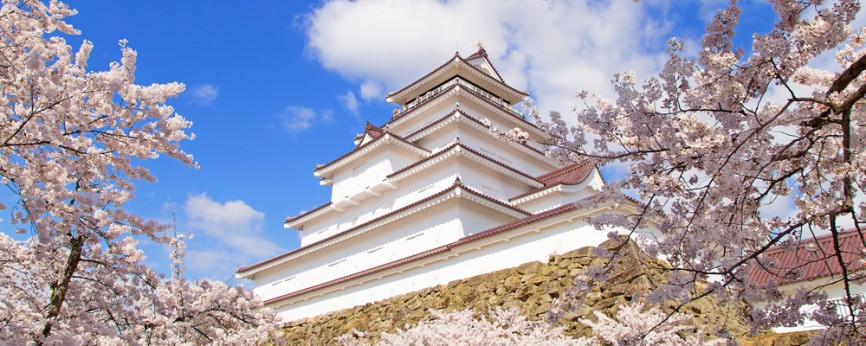
WHY IS TSURUGAJO CASTLE SO IMPORTANT?
1) THE CASTLE IS A SYMBOL OF SAMURAI LOYALTY AND COURAGE
Throughout the Boshin War of 1868 (during which loyal followers of the Tokugawa Regime fought against Imperial forces, which eventually led to the Meiji Restoration), Tsurugajo Castle gained a reputation as being an impregnable fortress. At the peak of the war, Tsurugajo Castle withstood over a month of heavy fire from the forces of the would-be Meiji Government. In 1868, Tokugawa forces (including Aizu) lost to the imperial faction – signifying the end of the Boshin War and the end of the age of samurai. The battle at Tsurugajo Castle is thought to have been one of the very last big battles leading up to the conclusion of the Tokugawa Era.
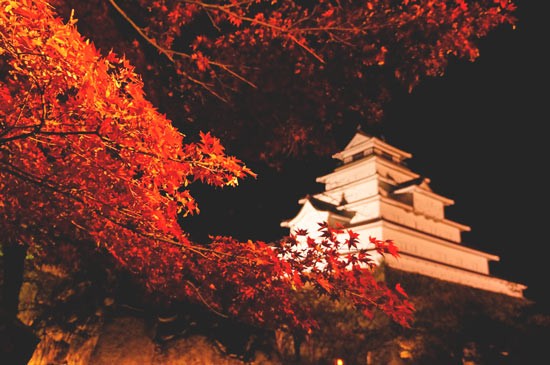
2) WITHOUT TSURUGAJO CASTLE THERE MIGHT NOT BE ANY TEA CEREMONY.
Feudal Lord Gamo Ujisato took the son of the 16th-century tea ceremony master Sen no Rikyu under his wing and brought him to Aizu, where he was raised. The tea rooms at Tsurugajo Castle are thought to have played an important role in the continued development of Japan’s school of tea ceremony. The son of Sen no Rikyu built the tea house Rinkaku that stands on the grounds of Tsurugajo Castle. This tea house was actually moved and hidden during the period of political unrest that occurred during the fired decades of the Meiji Restoration, in order to avoid its destruction alongside the castle. If this tea house had been destroyed, it might have had a catastrophic effect on the expansion and development of the tea ceremony practice prevalent in Japan today.
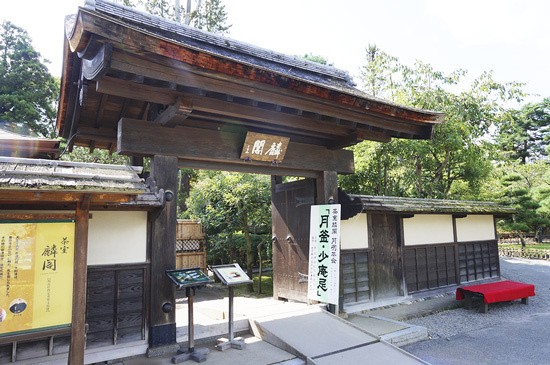
3) IT’S DEEPLY CONNECTED WITH THE LEGACY OF THE BYAKKOTAI
Everyone in Fukushima Prefecture knows the legacy of the Byakkotai – a group of 20 young samurai warriors who had trained at the prestigious samurai school Aizu Hanko Nisshinkan. At the height of the Boshin War, the Byakkotai warriors fled to the top of Mt. Iimoriyama. From the top of Mt Iimoriyama, the Byakkotai boys saw Tsurugajo Castle in flames. Assuming this meant the loss of the war, the boys attempted ritual suicide there on top of the hill. Of the 20 that attempted seppuku, 1 boy survived to tell the tale. The 19 boys who died on top of Mt. Iimoriyama were buried there and became legendary, hailed as heroes for their bravery and loyalty.
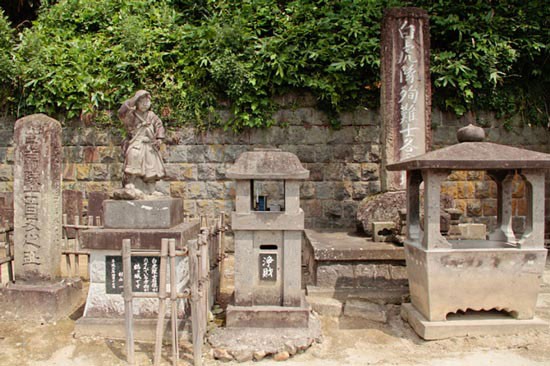
4) IT’S THE ONLY CASTLE IN JAPAN WITH RED ROOF TILES
This reason is a little simpler than the others. The red roof tiles are really iconic and look beautiful when they contrast against the white snows of winter.
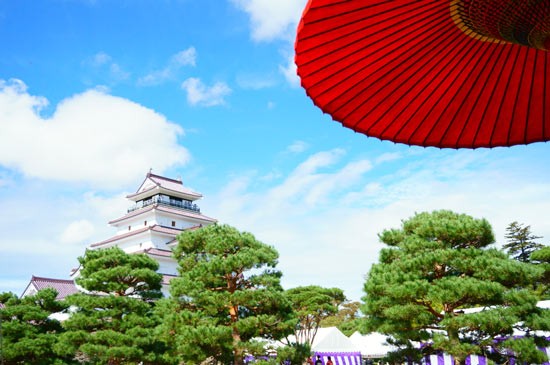
WHAT’S INSIDE THE CASTLE?
Tsurugajo Castle tower is laid out like a museum. As you move up the floors, you are gradually led through the history of the city, leading right up to and beyond the fall of the Aizu Clan. Many interesting artefacts, including historic scrolls and katanas, are displayed in the museum. There are no elevators in the castle, but you are rewarded for your climb up the flights of stairs that make up the castle tower when you reach the panoramic view waiting for you at the top. On the way back down, there’s an area on the ground floor where kids can dress up like samurai!
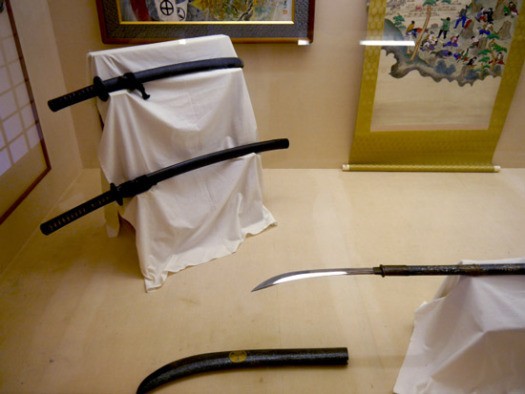
See here for information on entrance fees, opening hours and more.


